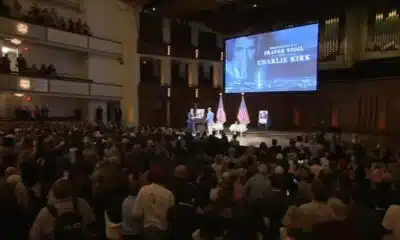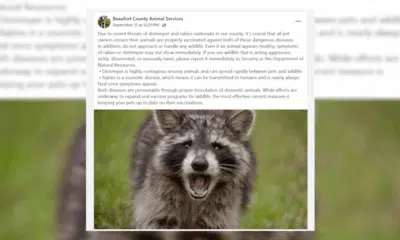News from the South - Texas News Feed
Texas again breaks its own jobs records | Texas
SUMMARY: In October, Texas continued its trend of job growth, adding 274,600 jobs over the year and surpassing the national rate by 0.6%. The state’s civilian labor force reached a record high of 15,497,100, marking ten consecutive months of growth. Texas’ unemployment rate stood at 4.1%, slightly above the national average of 3.9%. The Financial Activities sector led job increases with 6,200 new positions, followed by Leisure and Hospitality with 4,900. Governor Greg Abbott emphasized the state’s commitment to workforce development and training for high-demand jobs, contributing to more than 2.4 million jobs added since he took office.
The post Texas again breaks its own jobs records | Texas appeared first on www.thecentersquare.com
News from the South - Texas News Feed
Frustrated with poor play against UTEP, Arch Manning will 'get back to basics'
SUMMARY: Texas quarterback Arch Manning and coach Steve Sarkisian acknowledge the team’s underwhelming offensive performance in a 27-10 win over UTEP. Manning completed 11 of 25 passes for 114 yards with a touchdown and an interception, frustrating fans expecting a stronger showing at home. Despite a rough first half with 10 consecutive incompletions, Manning showed flashes of promise and scored twice on the ground. Sarkisian emphasized Manning’s mental struggle rather than physical injury and expressed confidence in his growth and consistency. Manning committed to improving fundamentals and handling in-game pressure ahead of tougher matchups, including their SEC opener against Florida on Oct. 4.
The post Frustrated with poor play against UTEP, Arch Manning will 'get back to basics' appeared first on www.kxan.com
News from the South - Texas News Feed
Texas nursing students return from life-changing internship in Africa
SUMMARY: Two Texas nursing students, Tom Strandwitz and Valerie Moon, participated in Mercy Ships’ inaugural nursing internship aboard the Africa Mercy hospital ship in Madagascar. Selected from nationwide applicants, they gained hands-on experience in various departments, providing free surgeries and care in underserved regions. Their travel expenses were covered by over $11,000 raised through community GoFundMe campaigns. Both students were deeply impacted by patient interactions, such as cataract surgeries restoring sight and building trust with families. The internship broadened their perspectives on global health care. They plan to continue careers in intensive care and public health, with hopes to return to international nursing missions.
Read the full article
The post Texas nursing students return from life-changing internship in Africa appeared first on www.kxan.com
News from the South - Texas News Feed
Austin becoming FEMA-approved emergency alert authority, planning 1st test alert
SUMMARY: On Monday, Sept. 29, Austin will conduct a test of the Integrated Public Alert and Warning System (IPAWS), becoming a FEMA-approved alerting authority able to send emergency alerts via Wireless Emergency Alerts (WEA) to cell phones and Emergency Alert System (EAS) messages to TV and radio. This coordinated test at 3 p.m. will cover the city across its three counties—Travis, Hays, and Williamson. The alerts will clearly indicate a test and require no action. IPAWS allows authenticated, geotargeted emergency notifications without subscription, enhancing public safety communication. More details are available at ReadyCentralTexas.org and Ready.gov/alerts.
The post Austin becoming FEMA-approved emergency alert authority, planning 1st test alert appeared first on www.kxan.com
-
News from the South - Florida News Feed7 days ago
Orlando restaurant owner invites artists to parking lot amid federal fight against street art
-
Local News6 days ago
DNA evidence found near scene of Charlie Kirk’s shooting matches suspect, FBI director says
-
Our Mississippi Home6 days ago
Family of Curious George Creators to Visit de Grummond in Hattiesburg
-
Mississippi News Video6 days ago
The Mustard Seed
-
SuperTalk FM5 days ago
Hyde-Smith, Warnock team up to recognize Gold Star Families Remembrance Week
-
News from the South - North Carolina News Feed7 days ago
White House officials hold prayer vigil for Charlie Kirk
-
Local News7 days ago
Amazon’s Zoox launches its robotaxi service in Las Vegas
-
Mississippi News Video5 days ago
‘Little quiet light’: Family remembers Delta State University student found dead on campus













































